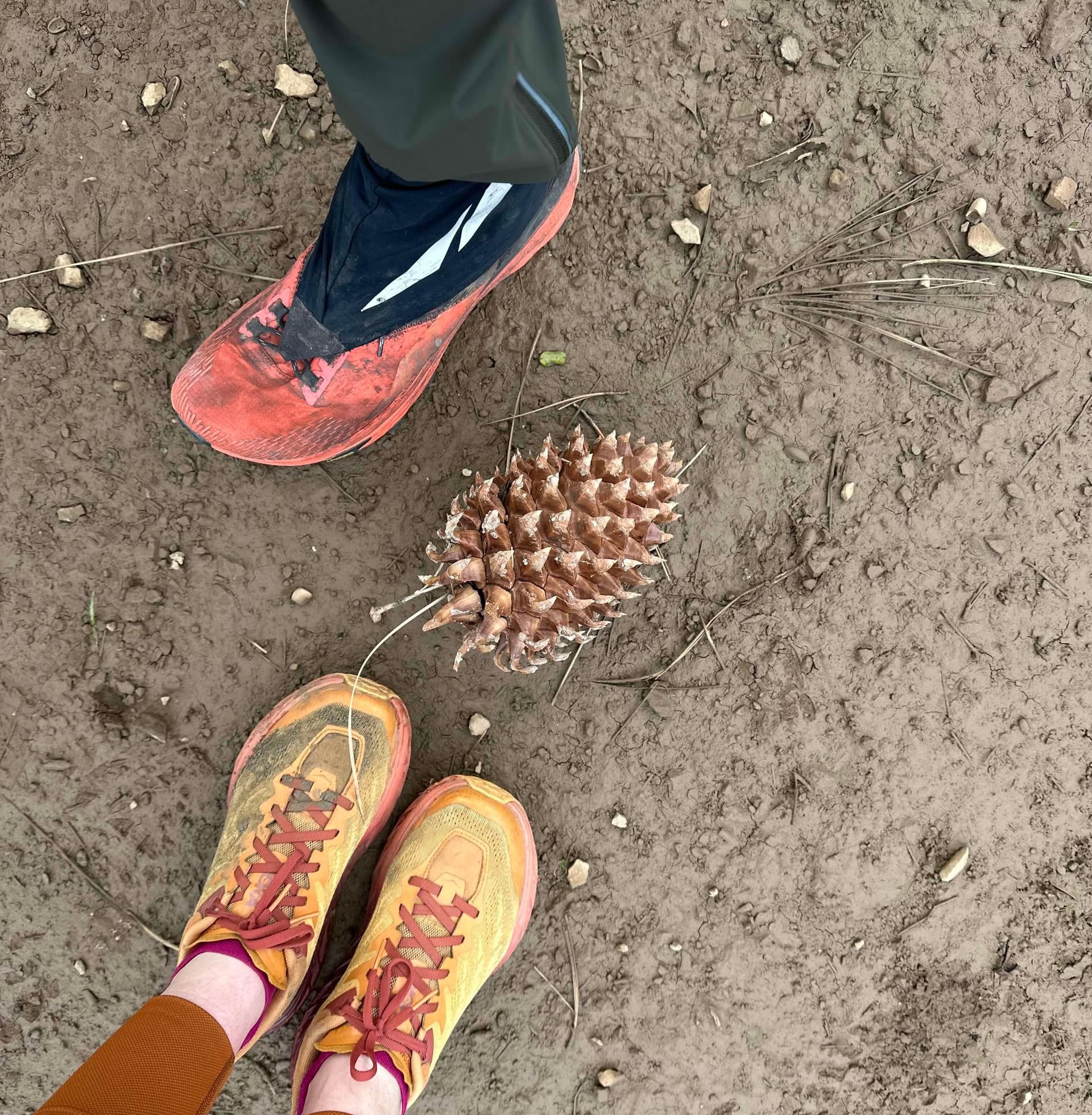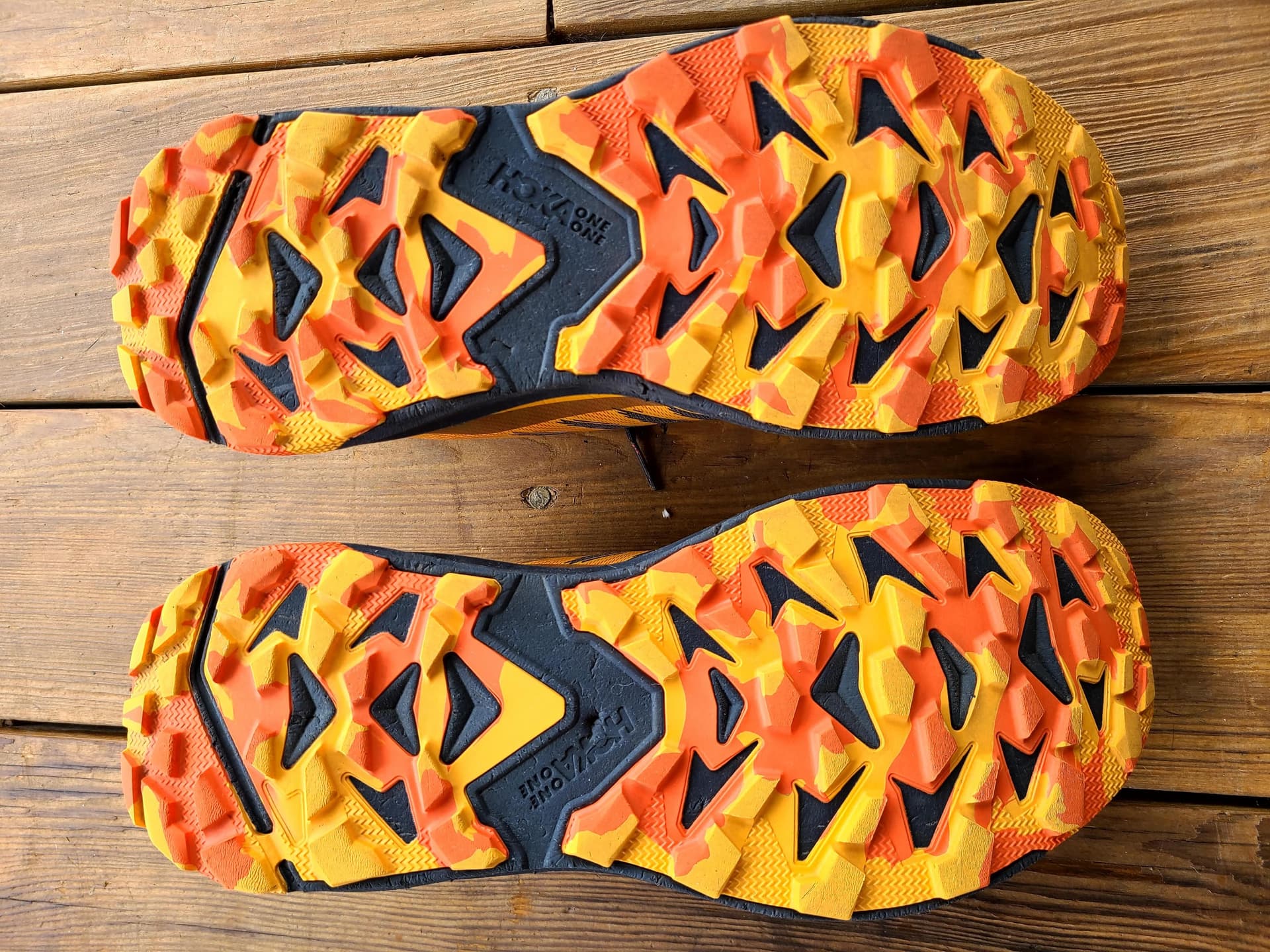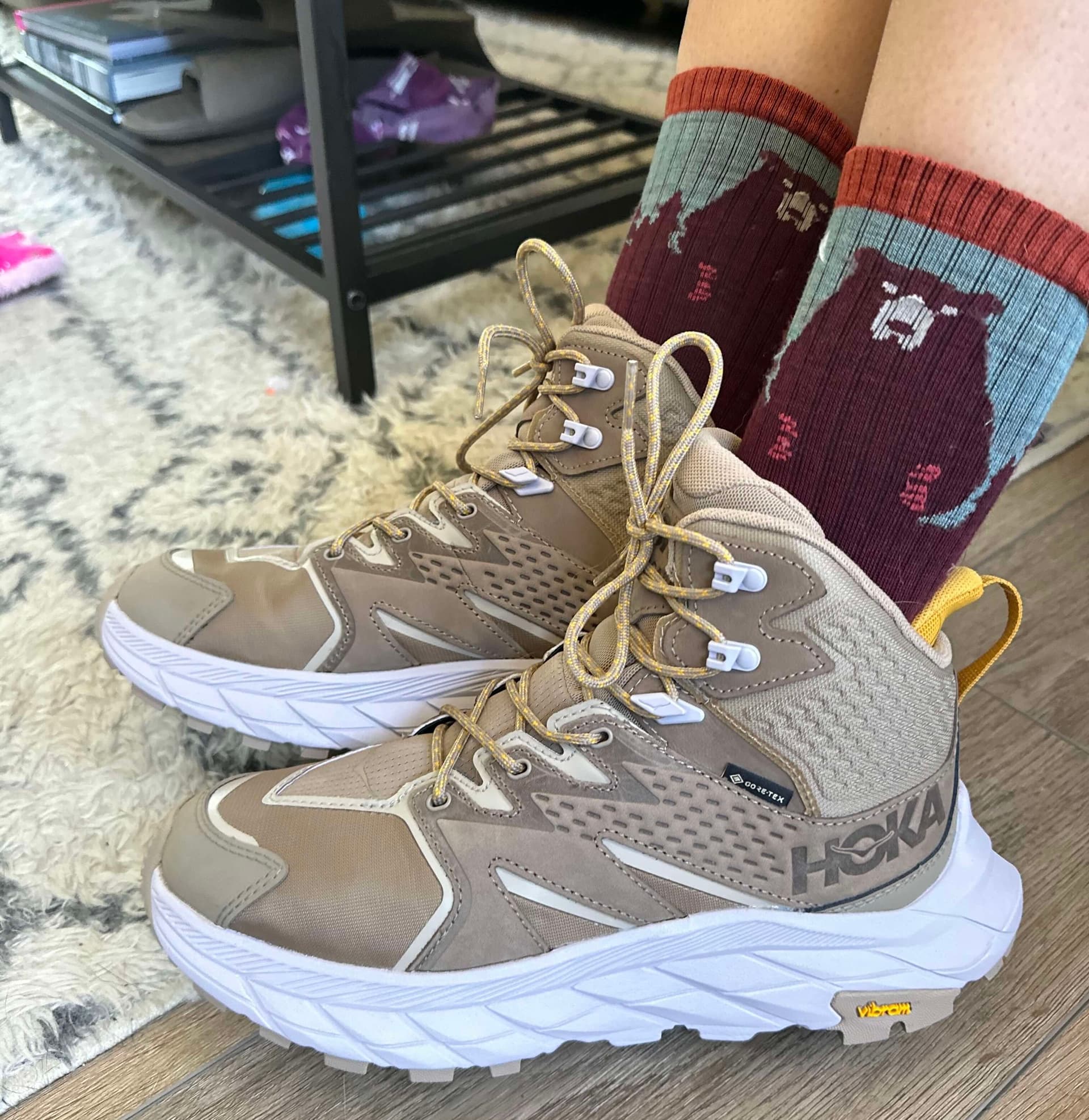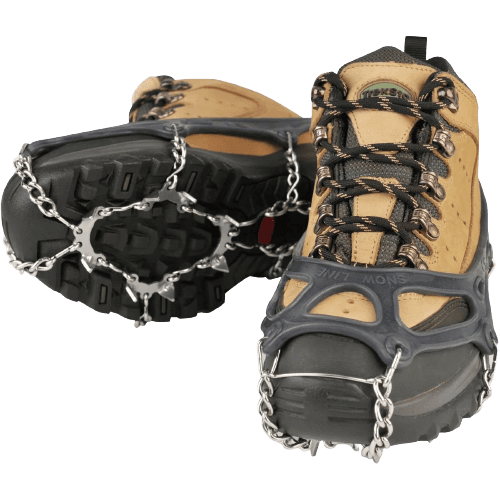Versatile Footwear for Fall Conditions: Your Complete Guide
Learn how to extend your summer trail runners into fall conditions without breaking your gear budget. This comprehensive guide covers sock strategies, foot care prevention, traction devices, and real-world testing insights for handling fall's unpredictable temperature swings and changing terrain. From merino wool sock selection to microspike recommendations, get practical advice that keeps your feet comfortable and blister-free through shoulder season adventures.
Fall is my favorite season. Watching the leaves change colors, feeling that crisp air, and experiencing the perfect balance between summer's heat and winter's bite makes every adventure special. Plus, I'm a weirdo and I love cold weather.
The key to fall footwear success: versatility beats specialization. Your summer trail runners can work well into November with the right strategies, a good sock system will do more for your comfort than any single piece of footwear, and smart prevention will save you from painful lessons on the trail.
This guide will show you how to extend your existing gear's usefulness while keeping your feet comfortable and blister free through fall's unpredictable conditions.
Understanding Fall's Unique Challenges
Fall hiking conditions change constantly. You might start at 30°F with frost on your tent, then be sweating in a t shirt by lunch. Most people think they need completely new gear for shoulder season, but that's expensive and unnecessary.

Temperature Management Strategy
Fall mornings can start brutally cold. I've broken camp with ice in my water bottles, then been hiking in shorts by 10 AM. As the sun sets earlier, afternoon temperatures drop fast. What feels perfect at noon can leave you with numb toes by 4 PM.
Always follow the mantra: "Be bold, start cold." Plan to feel slightly chilly at the start because you'll warm up quickly during climbs. Your footwear choices need to work across a 40 degree temperature swing in a single day.
Terrain and Traction Changes
Summer trails transform in fall. Wet leaves become slip hazards on familiar descents. Creek crossings that were bone dry in August now flow with seasonal runoff. Early season snow can hide trail markers and create unexpected obstacles. Rocky trails collect more debris as plants die back, making that secure footing you remember from July now covered with unstable, leaf hidden rocks.
Weather Priority Decisions
Dry, cold mornings: Choose lighter sock weights to prevent overheating and plan ventilation strategies for temperature rises.
Wet and rainy conditions: Decide whether waterproof protection or quick dry performance matters more. Quick dry often works better for active pursuits where you'll generate heat and moisture anyway.
Consistently wet days: Consider shoes with Gore-Tex for moisture protection with some breathability.

Modern Trail Runner Technology
Understanding modern trail runner construction helps you choose the right tool for fall conditions and know what your current shoes can handle.
Midsole Technologies
EVA (Ethylene Vinyl Acetate) remains the standard for most trail runners. It provides good cushioning and is lightweight, but can pack out over time and loses performance in extreme cold.
TPU (Thermoplastic Polyurethane) midsoles offer better durability and cold weather performance. They maintain responsiveness in temperature swings but tend to be slightly heavier.
PEBA (Polyether Block Amide) foams like those in premium running shoes provide excellent energy return and maintain properties across temperature ranges, but come at a higher price point.
Upper Construction Methods
Welded and bonded uppers reduce seams and potential failure points while offering better water resistance than traditional sewn constructions.
Ripstop nylon and synthetic mesh combinations balance breathability with durability. Tighter weaves offer more weather protection but sacrifice breathability.
TPU overlays in high wear areas like toe caps and heel counters provide protection without adding significant weight throughout the entire upper.
Outsole Rubber Compounds
Vibram Megagrip excels on wet rock and provides excellent durability on mixed terrain.
Continental rubber (borrowed from tire technology) offers superior grip on wet surfaces but may wear faster on abrasive rock.
Proprietary compounds like Salomon's Contagrip or Hoka's Vibram compounds are tuned for specific conditions and activities.
Tread Pattern Considerations

4-5mm lug depth works well for most trail conditions including loose soil and light debris.
Multidirectional lug patterns provide better traction on varied terrain compared to running oriented linear patterns.
Self-clearing designs help shed mud and debris, important for fall conditions with wet leaves and seasonal muck.
Protection Features
Rock plates (either TPU or carbon fiber) protect feet from sharp objects and provide some propulsion efficiency.
Toe bumpers and heel counters offer protection from roots and rocks while maintaining flexibility.
Gaiter attachment points on some models help integrate with debris protection systems.
Extending Your Summer Gear
When Trail Runners Work in Fall
Your summer trail runners handle most fall conditions if you understand their limitations. They work great on dry trails where you'll warm up quickly during long climbs and on familiar terrain where you know what to expect.
But recognize the limitations: most footwear loses traction on wet leaves and muddy sections. Trail runners with more aggressive lugs help with both obstacles. Your feet react differently when cold and wet, losing sensitivity and proprioception that makes stable footing harder to feel. Wet feet are also more prone to blisters as skin softens and friction increases.
I've used my Altra Mont Blanc shoes extensively in shoulder seasons. The breathable upper allows quick drying while providing reasonable moisture protection. In snow, they work fine as long as I keep moving and wiggle my toes regularly.
Transitioning to Hiking Shoes
Mid height hiking shoes offer better ankle support when trails are covered with loose debris. They provide more protection from moisture seeping through the upper and help retain warmth during cold starts.
The trade offs are weight and breathability. They're heavier for long days and don't ventilate as well during warm periods. If you're transitioning from trail runners, expect a break in period to adjust to different feel and support.
Consider sizing up slightly if you plan to use thicker socks than normal. Test sock and shoe combinations on shorter trips before committing to long adventures.
Sock Systems: Your Primary Tool

Sock selection becomes your primary tool for temperature regulation and moisture management in fall. The right sock can make summer footwear work in shoulder season conditions.
Material Selection
Lightweight merino wool handles temperature swings naturally, staying cool when you're working hard but providing warmth when you slow down. Wool maintains insulation properties when damp and resists odor buildup.
Synthetic blends dry faster and last longer if you're rough on gear. They work better in consistently wet conditions where quick drying matters more than temperature regulation.
Cushioning for Variable Conditions
Light cushion works best for fall's variable conditions, providing enough padding for longer days without overheating during warm periods.
Medium cushion works for extended rocky terrain or when breaking in new footwear.
Toe Sock Advantages
I use toe socks because I get blisters between my toes more than anywhere else. They prevent skin on skin friction that causes inter toe hot spots. Don't overthink this though, try a pair and see if they work for your feet and blister patterns.
For snowy shoulder season conditions, I use Injinji wool toe socks in the padded toe versions. The extra cushioning adds warmth and comfort in cold conditions.
Prevention and Foot Care
Prevention beats treatment every time. Here's how to avoid problems before they start.
Tape and Lubrication Strategy
Use KT tape or Leukotape on known hot spots before they become problems. Apply tape to clean, dry skin for best adhesion. I prefer Leukotape for high friction areas because it stays put better than KT tape in wet conditions. Don't overdo it though, too much tape can create new pressure points.
Apply a thin layer of Vaseline around your toes and other friction points. Don't use too much or it becomes messy and can interfere with sock performance.
Cleanliness and Maintenance
Use clean socks and turn them inside out after each use. Clean your shoes too, remove insoles and clear out dirt and debris. This extra effort makes a surprising difference in comfort and prevents hot spots from small rocks or debris.
Emergency Protocols
Know the signs of foot problems that require turning back: persistent numbness, inability to feel your feet properly, or hot spots that won't resolve with field treatment. Carry basic tape and treatment supplies. Don't push through serious foot problems, they rarely improve and often get much worse.
If camping and need to warm cold shoes overnight, boil water and put it in a Nalgene. Place it inside your shoes to warm them before putting them on.
Traction and Protection Systems
Gaiter Selection
I use Altra gaiters religiously, but they work with other shoe brands too with a little work. Get some velcro and super glue it to the back of non Altra shoes for compatibility.
Low gaiters keep dirt and debris out during normal hiking.
Mid height gaiters work better for early season snow and deeper debris.
Full gaiters can be overkill unless you're dealing with significant snow or extremely brushy terrain.
Paired with low gaiters, I can keep most snow out up to above ankle depth.
Traction Device Selection
Yaktrax limitations: Yaktrax have their place around town on flat terrain, but I wouldn’t recommend them for trails. On inclines, the springs don't bite into the ground for stable traction and can leave you with uneven footing.
Microspikes for fall conditions: Microspikes provide reliable traction on packed snow and ice. Carry them when overnight lows will create frozen ground after recent snow or rain. For fall conditions, Snowline Chainsen Pro microspikes are my preferred choice with trail runners as they're one of the most durable options.
Important safety note: Do NOT use crampons with trail runners. They can slip around causing you to lose reliable traction, and the aggressively angled spikes can cause injuries or gear failures.
When to upgrade: If you're tackling trails with higher exposure where a fall has serious consequences, consider actual crampons with compatible boots. For most fall hiking, microspikes provide enough traction without requiring specialized boots.

Activity Specific Strategies
Day Hiking Priorities
Focus on temperature management over absolute performance. Remember that sun sets earlier in fall. What feels comfortable at 2 PM might leave you cold during the last hour of hiking.
Trail Running Considerations
Stick with familiar footwear unless conditions specifically require changes. Focus on traction considerations for wet leaves and seasonal debris. Safety becomes more important than pure performance as visibility decreases.
Multi Day Backpacking
Durability and comfort for extended wear become priorities. Pack backup sock systems and lightweight camp booties to switch into for evening warmth.
Building Experience and Making Smart Transitions
Test new sock and footwear combinations on shorter trips before committing to big adventures. Build experience gradually rather than making major changes all at once. Learn your personal temperature regulation patterns in different conditions.
As you move toward winter, understand when fall strategies stop working. Plan investment priorities for true cold-weather systems based on what you learned during shoulder season.
The Bottom Line
Fall footwear success comes down to prevention and versatility. Focus on extending your existing gear rather than buying specialized equipment for every condition. Build sock systems that handle temperature swings. Keep your feet clean and use proven prevention strategies.
The goal isn't perfect comfort in every condition, it's maintaining safety and comfort while exploring fall's incredible landscapes without breaking your gear budget. Your summer trail runners, the right socks, and smart prevention will handle most fall adventures better than expensive specialized gear.
Start with what you have, learn what works for your feet, and upgrade only when you identify specific limitations that gear can actually solve.
Found this guide helpful?
Ready to put this guide into action? Check out my gear recommendations and real trip reports for additional insights from the field.

